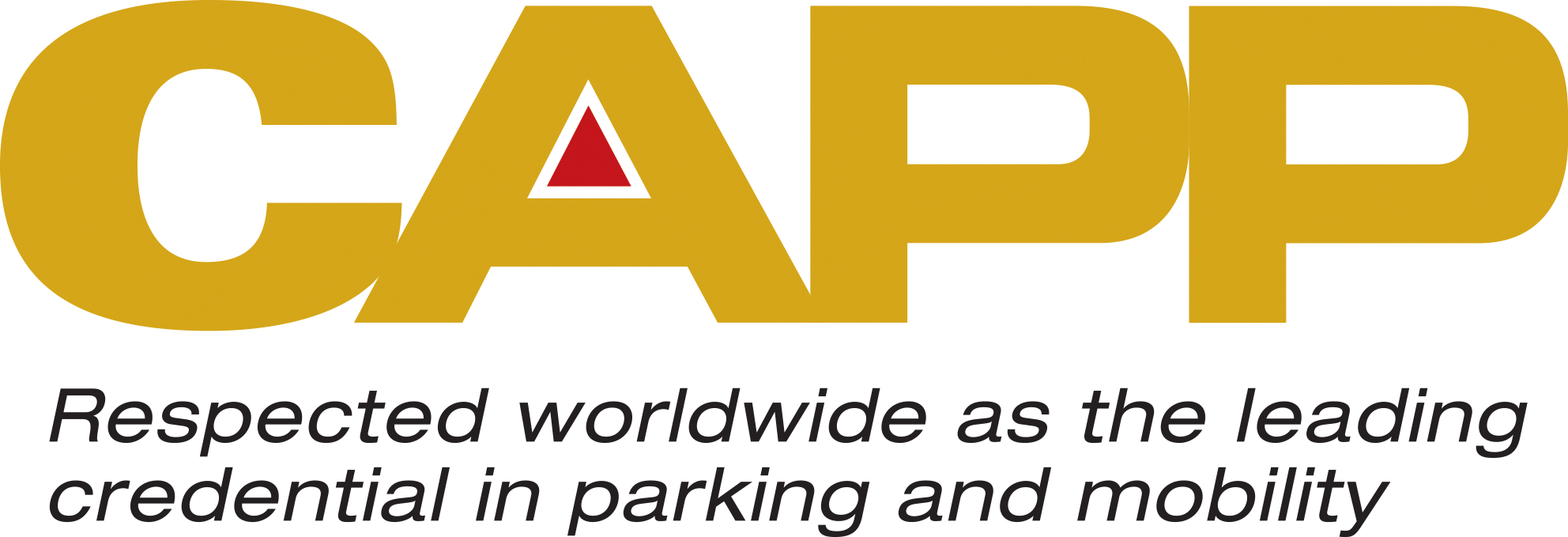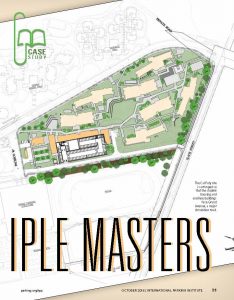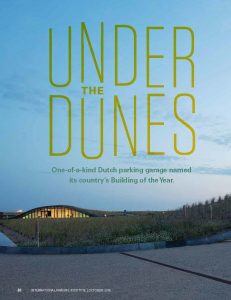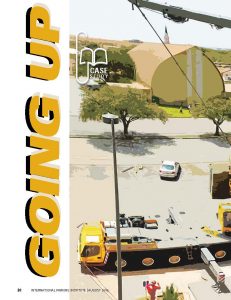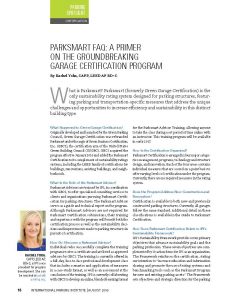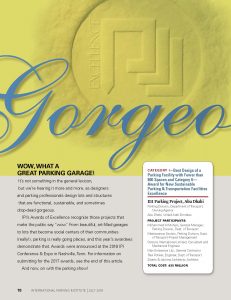GUIDE TO PARKSMART CERTIFICATION
For use with Parksmart Certification
Version 1.0 with Addenda
Guide Version 2.3
April 2020
Congratulations on your decision to pursue Parksmart certification!
You’re on your way to increasing the value and performance of your project. This guide will lead you through the process.
There are four steps to Parksmart certification:
1. Register your project by completing the online form, submitting payment, and setting up a planning call.
2. Apply for Parksmart certification by submitting your certification documentation.
3. Review. Your Parksmart documentation is reviewed by Green Business Certification Inc. (GBCI).
4. Certify. Receive the certification decision. If you’ve earned Parksmart certification, congratulations!
If you need assistance at any time, please contact us. REGISTER
When you register, there are a few key considerations:
Existing and new parking structures are eligible for certification and projects must:
Be a multi-level structure that stores vehicles. This structure may be a stand-alone building or integrated into a mixed-use building (e.g., office building or shopping mall).
Include only one parking structure. If your property contains multiple parking structures, contact us and request information on the Parksmart campus approach.
Use a reasonable Parksmart boundary:
o The boundary must include all space within the structure dedicated to parking, including occupied space integral to garage operations. Occupied space not integral to garage operations cannot be included within the boundary.
o Public spaces (e.g. plazas, gardens) managed by garage ownership or management and ancillary surface parking may be included in the project boundary at the discretion of the applicant.
o The boundary must be consistent throughout Parksmart documentation.
Projects completed and commissioned more than two years prior to registration are considered existing structures and must seek Parksmart Pioneer certification. Projects that are not yet commissioned or were completed and commissioned within two years of registration are considered new construction and may seek Parksmart Bronze, Silver, or Gold certification.
Register your project in Arc, GBCI’s new technology and data platform that helps projects track and continuously improve their performance. Provide the registration information, accept the Parksmart services agreement, and submit payment. You can then assemble your project team and begin to document your project’s sustainability features!
Project Team Roles
Individuals on your project team will be called on to perform certain roles throughout the Parksmart certification process. Here’s a rundown of who’s who, so you can select your team wisely:
Owner: The owner of the project is the person or entity who has the authority to hold and control the real and personal property, and accepts (or authorizes the acceptance of) the certification agreement. While there may be multiple owners for a particular project (if so, please submit a Confirmation of Primary Owner’s Authority Form), we ask that you identify a single individual to administer the certification process. The owner has ultimate control over the Parksmart project, meaning that GBCI will respond to the owner regarding the administration of the project over any other member of the project team.
Agent: The agent is the person (or entity) who is granted authority by the owner to register the project and accept the certification agreement. If you are using this option, remember to upload a signed Confirmation of Agent’s Authority Form.
Project Administrator: This team member acts as a project manager, overseeing the Parksmart project as well as which project team members are responsible for certain tasks or measures. The project administrator plays a key quality role by checking that the Parksmart documentation is complete and accurate before submitting it to GBCI for review, and accepting the review results once certification is achieved.
Note: the individual who initially registers the project will automatically be granted the role of the project administrator, but the owner may transfer this role to another team member at any time. With your project team, develop a game plan. Figure out which measures you want to pursue and assign them to project team members. The Parksmart Planning Worksheet is a good tool to use here. Once you’ve completed your initial plan, schedule your Parksmart planning call to review your intended approach with a GBCI reviewer and ask any questions you may have about the certification process. After this initial call, your team is ready to collect information, perform calculations and analysis, prioritize any improvements, and prepare documentation demonstrating achievement of your selected measures.
APPLY
Project documentation is uploaded to the Arc platform. Arc allows you to store documents and track your progress towards certification.
Throughout this process GBCI staff are available to support you. You may email parksmart@gbci.org or request a call with a GBCI reviewer.
Projects have 5 years from registration to achieve certification. We encourage you to complete the certification process as quickly as possible (we want to promote your achievements!), but understand that embracing strategies outlined within the Parksmart Certification Standard may take time. We’re happy to discuss your certification timeline with you during your first project call.
The standard path to certification is to submit all of your measures for review at one time. If you would like to submit measures according to an alternative schedule, please contact us to discuss.
Here are some tips from past successful Parksmart submissions to make sure yours goes smoothly:
- Open each file to verify that you are submitting the correct documents
- Cross-check measures to make sure that you are reporting common data points, such as square footage, number of parking spaces, and total construction costs consistently
- Highlight relevant measure information
- Clearly and intuitively label file uploads
- Only submit required documentation (if only a few pages of a large report are needed to provide the required measure information, highlight the relevant sections only; no need to submit more!)
- Include concise narratives describing project-specific circumstances
The certification fee is due when you submit your first measure(s) for review.
When you are ready for a GBCI review of your documentation, just email us at parksmart@gbci.org.
REVIEW
After you’ve submitted your documentation and the certification fee has cleared, GBCI will evaluate the documentation for completeness and compliance with the Parksmart rating system.
Within 10-12 business days of your submission, GBCI will respond with a review, indicating which measures are achieved and which, if any, are pending and require further information.
If you have questions regarding a review determination or comments, we encourage you to schedule a call with a GBCI reviewer.
If you don’t achieve your submitted measures during the first (preliminary) round of review, that’s ok. The Parksmart certification fee includes a preliminary and final round of review. You can provide the additional documentation requested and submit for the final review.
Special circumstances may require additional reviews or actions that incur additional fees:
Supplemental Reviews If additional reviews are necessary beyond the two rounds, supplemental reviews may be requested, at an additional fee.
Expedited Review
In a time crunch? Contact us at least 5 business days (please allow longer if you are paying by check) prior to submitting for review to request an expedited review to reduce the review timeline from 10-12 business days to 5-6 business days. There is an additional charge for this service, and our ability to fulfill your request depends on our current review capacity. If your request can be accommodated, we will confirm and provide a custom review schedule for your project.
Submitting a Measure Interpretation Ruling
Creative projects sometimes have innovative ways of achieving a measure’s objectives. Measure Interpretation Rulings (MIRs) provide GBCI-approved clarifications or alternative compliance pathways to achieving Parksmart measures. MIRs are not precedent setting; they only apply to the project under which the request was submitted. Contact us if you want to pursue an approach to achieving a Parksmart measure outside of the standard options and documentation requirements.
Precertification Review
This is an optional review pathway, available for a fee, to help determine which measures are anticipated to be achieved by your project when you submit for certification. Projects achieve precertification after a completed Parksmart Precertification Worksheet and Precertification Scorecard are reviewed and approved by GBCI. Parksmart precertification expires after three years. If you are interested in pursuing precertification, email parksmart@gbci.org for more information.
Contesting a Review Ruling
If resolution of a technical issue related to a review has not been achieved via our customer support channels and discussion with GBCI reviewers, GBCI’s Review Challenge Policy allows for a formal challenge of GBCI rulings.
CERTIFY
Once your project has reached a certification achievement threshold, your team can accept the review findings and celebrate your Parksmart certification!
Acceptance of your certification closes out your project review; you will no longer be able to submit measures for review or contest review decisions. Please double check that you have achieved all targeted measures before accepting certification.
Certification Levels
The level of Parksmart certification achieved is determined by the number of points that your project earns and whether it is a new or existing structure.
Existing Structures
Certification Level | Points
Parksmart Pioneer | 90+ points earned
New Construction
Certification Level | Points
Parksmart Bronze | 110-134 points earned
Parksmart Silver | 135-159 points earned
Parksmart Gold | 160+ points earned
Projects achieving Parksmart Pioneer certification must earn a minimum of 15 points in each of the three main certification categories (Management, Programs and Technology and Structure Design)
Projects achieving Parksmart Bronze, Silver or Gold certification must earn a minimum of 20 points in each of the three main certification categories (Management, Programs, and Technology and Structure Design)
PROMOTE YOUR PROJECT
Parksmart certification benefits your business’s bottom line and underscores your sustainability efforts. Once you’ve earned certification, the Parksmart Public Relations Guide can help you share your achievement with the world. By email, you’ll also get information about receiving your formal certificates of recognition and purchasing your Parksmart plaque.
HOW GBCI HANDLES YOUR DATA
Your work with Parksmart is something to be celebrated – and communicated to the world at large. Achieving Parksmart certification gives you the opportunity to share your project strategies, photos and insights, and play a pivotal role in educating other project teams.
We use your project data for the greater good: to educate and provide resources for Parksmart project teams and others around the world, showcase your strategies, and share the size and power of the green building movement.
Parksmart registered and certified projects are, by default, considered “public” projects, and included in Parksmart’s public project directory. A listing in this directory allows the general public and members of the media to look up your project listing and its related details.
All “public” projects also benefit from publicity opportunities: we may use your project data to create case studies highlighting your project’s features, reference your project on our website or to the media, or create other derivative works.
You are free to opt-out of the Parksmart project directory and publicity opportunities as a “private project” at the time of registration. All private projects that earn certification will be prompted once more to transition to public status. You will need to re-confirm your “private” status at that time, if you wish to retain it.
REVOCATION OF PARKSMART CERTIFICATION
In rare situations, a Parksmart certification may be revoked. The Certification Challenge Policy ensures that all Parksmart project applications and subsequent reviews by GBCI team members are completed with integrity, accuracy, and truthfulness. A certification challenge may be initiated by GBCI or any third party within 18 months of a project’s certification. The certification challenge may include additional review of project documentation, the review of supplemental information, and/or a site visit. In line with the policy, you’ll need to retain all project documentation related to your certification, and the achievement of measures, for 2 years after receiving certification, to ensure that this information is available in case of a challenge.
FEES
Registration fee: There is a flat registration fee calculated on a per-project (parking structure) basis that you’ll pay up front at the time of registration. Rates are based on the fee schedule published at the time of registration. Registration fees must be paid within 30 calendar days, otherwise the registration may be cancelled.
Certification fee: The certification fee is charged on a per-project (parking structure) basis. Certification fees are due within 30 calendar days of your first review submission. Remember, GBCI will not begin your review until payment in full has been received and cleared our system. Certification fees are based on the fees published at the time the project is submitted for review and cover two rounds of review.
Other fees: Other fees for optional services, including expedited and supplemental reviews may apply.
Payment terms: Invoices must be paid within 30 calendar days. A one-time extension of an additional 30 calendar days is available – please contact us. If invoices are not paid within the required timeframe, they will be cancelled, and in subsequent requests for services, the invoice amount may change according to the prevailing fee schedule. Fees are non-transferrable.
RESOURCES & TOOLS
We offer a number of resources and tools to support you during the Parksmart certification process. Most are available at parksmart.gbci.org:
For more information
Email us at parksmart@gbci.org

